 Life is constantly changing, and with change comes the element of uncertainty. The unknown can then trigger self-doubt or a fear of moving forward. This yin yoga sequence for grounding and protection will combat these negative emotions. By stepping on your mat and holding these postures, you can remain calm and satisfied (even when you don’t know all of the answers in the moment).
Life is constantly changing, and with change comes the element of uncertainty. The unknown can then trigger self-doubt or a fear of moving forward. This yin yoga sequence for grounding and protection will combat these negative emotions. By stepping on your mat and holding these postures, you can remain calm and satisfied (even when you don’t know all of the answers in the moment).
I found this message particularly inspiring amidst the COVID-19 restrictions.
Since I work from home anyway, my life hasn’t been affected in the same ways it has for others. Yet, I’m a social being that really enjoys interacting with people on a regular basis. So the requirements to stay home have challenged me in that way.
Thankfully, numerous yoga instructors have found creative ways to teach yoga online. This means that I get to take classes with teachers all across the country. And this week’s sequence is inspired by a recent evening practice with Meghan Foley at UpYoga Minneapolis. She teaches Thursday evenings at 7 pm Central Time if you want to join me for this virtual treat!
BEFORE YOU GET STARTED
Props you’ll need for this class:
- Bolster, or blanket
- Block(s)
GANESH, THE PROTECTOR OF NEW BEGINNINGS
Ganesha, who is also called Ganapati, is the elephant-headed Hindu god of new beginnings. He is also known for his ability to overcome any obstacles and get what he wants. When you feel challenged, you can invoke the energy of Ganesh to give you strength. You can tap into his wisdom when you don’t have answers or a direction about your future.
One of my favorite things to do in a restorative style class is to tell stories as students rest in each pose. And Meghan Foley did just this in this yin yoga for grounding class. She told the story of Ganesh and Chandra, and in this story, Ganesh catches the moon laughing at his misfortune. Frustrated and angry, Ganesh removed one tusk and threw it at the moon. The light of the moon was extinguished.
Yet the nurturing qualities of the moon–like the calming and cooling nature of it–disappeared with the light. Download the guide above to discover just how the story ends, and why it’s an entertaining fable to read in conjunction with this yin sequence.
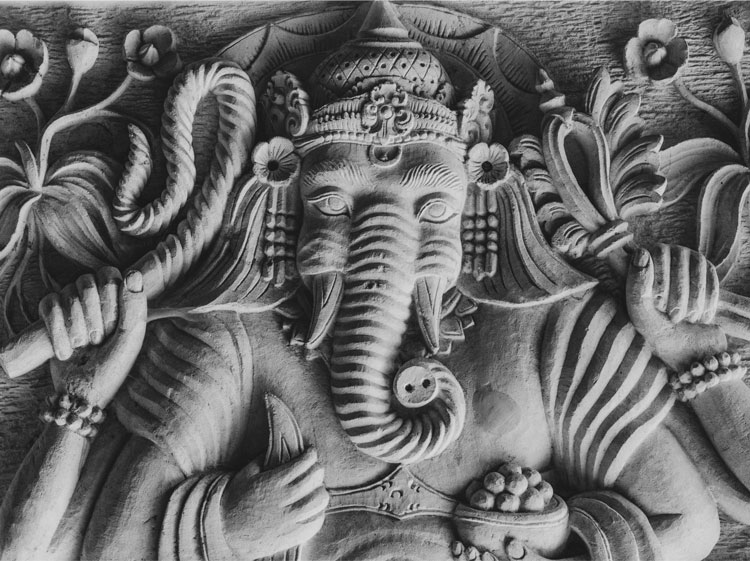
Photo Credit: Dimitri Houtteman
(1) SEATED PRANAYAMA
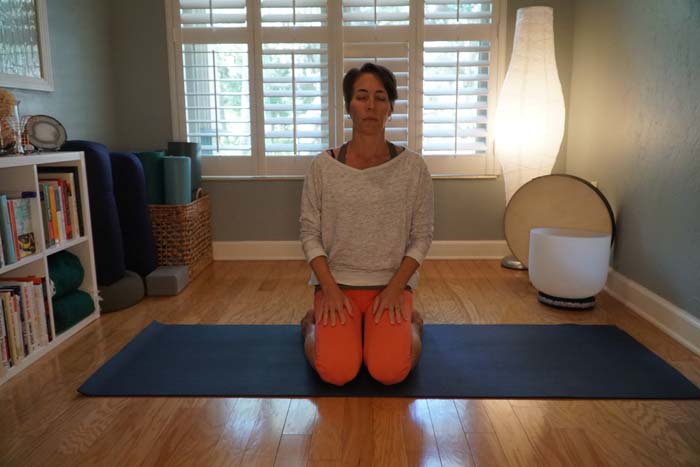 Purpose: When you start seated, your mind and body must be slightly engaged to keep you upright. This is a great way to transition from the busy-ness of your day into the more quiet aspect of the yin practice. It’s also a neutral position from which to assess your current body sensations.
Purpose: When you start seated, your mind and body must be slightly engaged to keep you upright. This is a great way to transition from the busy-ness of your day into the more quiet aspect of the yin practice. It’s also a neutral position from which to assess your current body sensations.
Length: 5-7 minutes
Additional Support:
- Any seated posture that is comfortable will work.
- Place the palms face down to tune into more of the grounded nature of this posture.
- Breathe in to a count of 3 or 4. Exhale to a count of 5 or 6. By elongating the exhale, you instruct the body to shift into parasympathetic mode. Click here to explore this home pranayama practice, which includes this form of vishama vritti.
- Sit on a block or bolster to support the hips, if needed.
(2) RECLINED TWIST
Purpose: This simple, reclined twist is an ideal way to release tension in the low back and spine.
Length: 3-5 minutes
Additional Notes:
- Start in savasana. Pull the right knee into the chest. Hold here in one-legged apanasana for one minute, to release the low back and feel the back of the pelvis on the earth. Then move into the reclined twist.
- Place a block or bolster under the bent knee to ensure the opposite shoulder can stay rooted to the ground.
- The free arm can extend straight out from the shoulder, or you can bend the elbow and make a goal-post shape with the arm.
- In any case, allow the entire back line of the body to get heavier with each breath.
(3) RECLINED BUTTERFLY
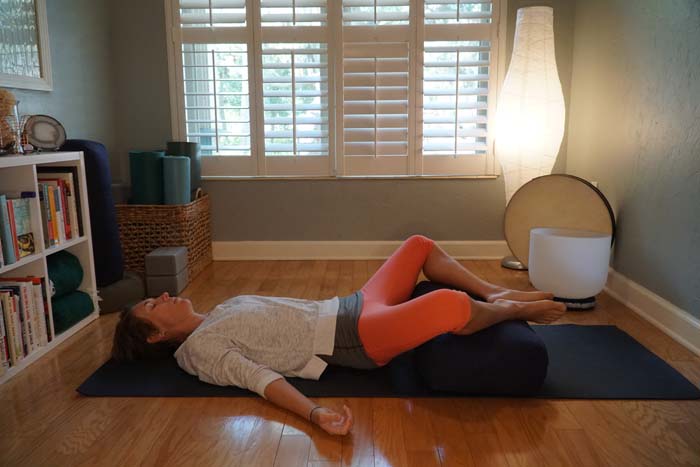
Purpose: The goal here is to neutralize the spine and continue releasing any tension in the back. Also known as supta baddha konasana, this hip opener lengthens the adductors and offsets the cross-over position just taken in the twist.
Length: 2-3 minutes
Additional Support: Place rolled blankets or a bolster under the knees. This will help the pelvis remain in a neutral position and add an extra sensation of support in this pose. Remember, this is yin yoga for grounding, so the more places the body is touching a surface beneath you, the better.
(4) BANANASANA
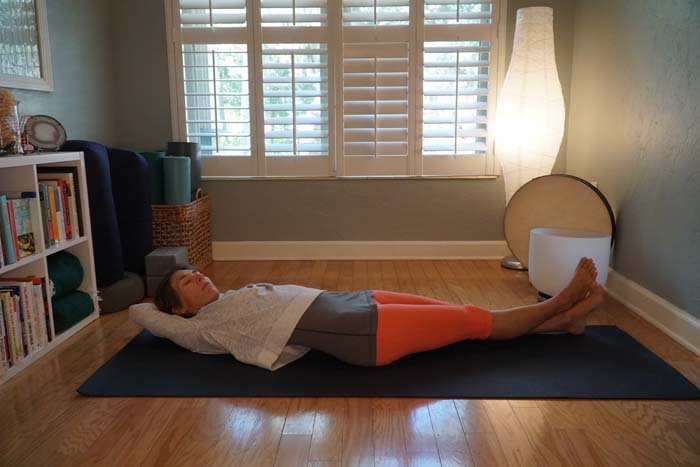
Purpose: This supine lateral bend is the perfect way to open up the sides of the body. When you’re under stress, it can be difficult to breathe deeply. This posture provides a safe environment in which you can do so again. And, it’s a great way to remember that you are capable of welcoming change in your life, even if the future is unknown.
Length: 3-5 minutes
Additional Support:
- Arms can remain by the side if having them overhead is too intense, or causes tingling.
- Keep the feet side by side to lessen the stretch.
- Encourage students to breathe deeply into the side of the body that is receiving the stretch.
(5) HAPPY BABY
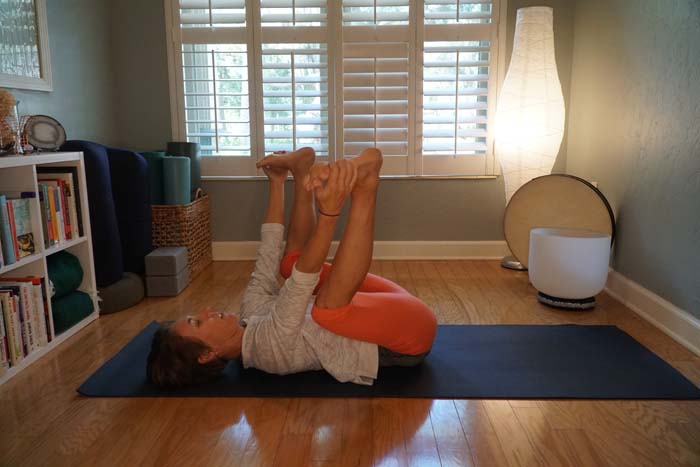
Purpose: The goal with this pose is to lengthen the low back while in a symmetrical position. Plus, it’s a way to open the hips.
Length: 1-3 minutes
Additional Support:
- Simply hug the knees toward the armpits for a simpler version of happy baby that still opens up the inner groin.
- Or, roll around in either version of the pose to massage out the spine even more!
(6) REPEAT STEPS 2-4 ON THE SECOND SIDE
Purpose: Since this is yin yoga for grounding, you want to make sure you are even on both sides. Thus, take the same amount of time on the second side for postures 2-4 above. This means that you will repeat the apanasana hold, the reclined twist, supine butterfly, and bananasana on the left side now.
Length: 8-13 minutes
Additional Notes:
- The left side of the body correlates with lunar properties. This means that you can remind students to tap into more quiet, nurturing, cooling, and calming aspects of their being while in these poses.
- Instruct students to windshield-wiper the knees, or hug them into the chest, before rocking to a seated position for the next posture.
(7) CATERPILLAR
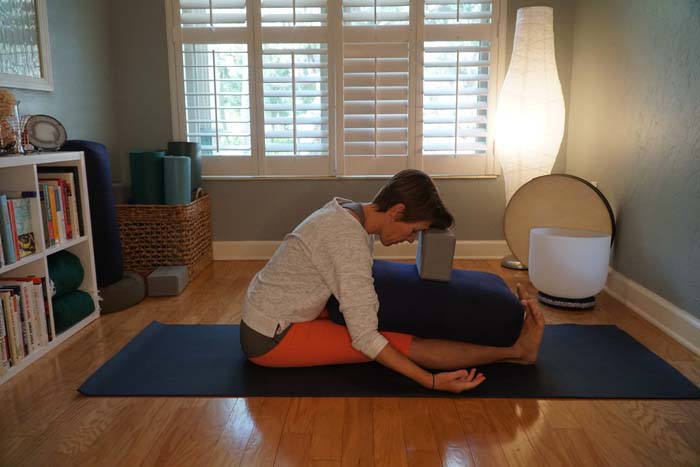
Purpose: You have created freedom in the low back in the previous postures which should make caterpillar (paschimottanasana) easier to access now. This pose also opens up the space between the shoulderblades. When in protection, fear prevents this area from expanding. Instead, breathe into the back of the heart here, knowing you are grounded and safe here on your mat.
Length: 3-5 minutes
Additional Support:
- Place a rolled blanket behind the knees to lessen the intensity on the hamstrings.
- Use a bolster or blocks to support the torso and head, if desired.
- Notice the shoulders naturally rounding forward here, and focus on relaxing the space between the scapula.
- Keep the palms facing down if you want to continue the theme of yin yoga for grounding in this pose.
(8) SHOELACE
Purpose: The fascia around the lateral hip was stretched in bananasana. Now, it’s time to revisit this area in ways that also target the external hip rotators and hamstrings. Remember that the bottom leg is the lever that intensifies this stretch. And, since the superficial fascia runs below the skin from head to toe, the position of your head in space just might change your experience in this posture. Go slow. Be kind to yourself. And enjoy the deeper hip stretch you receive here.
Length: 3-5 minutes
Additional Support:
- Sit on a blanket to elevate the hips, if needed.
- For a deeper stretch, bend the bottom knee into the full version of shoelace (or Gomukhasana in the yang tradition)
(9) STRADDLE
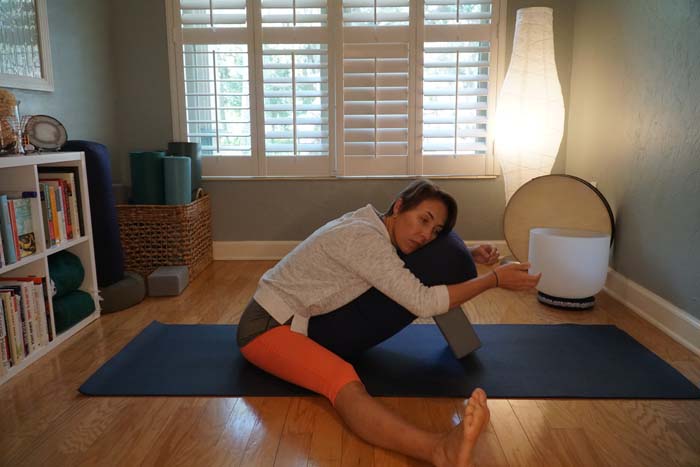
Purpose: Shoelace stretches the outer hips, and straddle (or dragonfly) does so on the inner leg. When you pair these two postures together, you create balance in the hip region. And it’s from this place of inner equilibrium that you can move forward with more confidence and clarity in uncertain times.
Length: 3-5 minutes
Additional Support:
- Place any number of props under the torso for support.
- If your head turns to the side in this pose, make sure to switch the direction of your head position halfway through your time here.
- You can keep the legs more engaged (toes pointing upward) for the first half of the pose. Then, perhaps let the legs relax here in the second portion. Notice the difference in the posture as a result.
(10) SHOELACE, SECOND SIDE
Purpose: Take the same version of shoelace on the second side to open up the left hip now.
Length: 3-5 minutes
Additional Support: The same options apply now as when you took the pose minutes ago. Just be sure to notice any differences side to side, and don’t force yourself into a deeper version of the pose if this side is tighter.
(11) SAVASANA

Purpose: Final relaxation is the culmination of the practice! It’s the time you’ve been waiting for in this yin yoga for grounding class!! Embody the rest and rejuvenation created during class. Let it settle in and permeate every fiber of your being. Breathe deeply. Breathe naturally. And allow the body to breathe itself as you drift into this peaceful place in which the body and mind can simply be.
Length: 5-10 minutes
Additional Support:
- Place a rolled blanket behind the spine if you still desire more opening for the shoulders.
- Use the bolster behind the knees to give extra support to the low back.
- Gently set an eye pillow over your eyes to remove any light distractions from the room around you, and even cover up with a blanket to get more comfortable.
- If taking “regular” savasana, see if you can spread your arms and legs just a hint wider than normal. Feel your enlivened, grounded nature taking up space. Memorize this expanded version of yourself and tap into it again when you feel uncertain in life.
PUTTING IT TOGETHER
Life can be full of uncertain times. That’s why a yin yoga class for grounding and protection can remind you that the answers you seek lie within. You’ve got all of the resources you need to thrive. It sometimes requires you get still and calm in order to hear those answers. This sequence will help you do just that! And thanks to the added energy of Ganesh–protector of new beginnings and remover of obstacles–you’ll be well on your way to living with more exuberance (even when the future is unknown).
Take Action Now:
- Download this yin yoga for grounding sequence now.
- Set time aside to take this class with me. Subscribe to my YouTube Channel now to get notified when the video is live.
- Breathe deeply today, and get outside. Both are great ways to stay grounded, too!


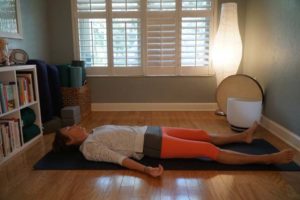
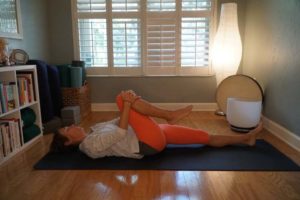
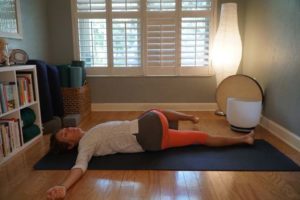
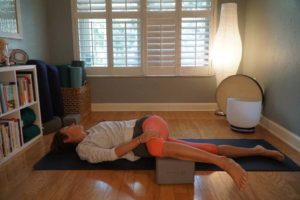
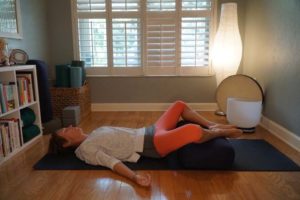
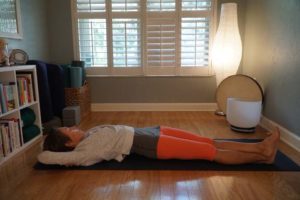
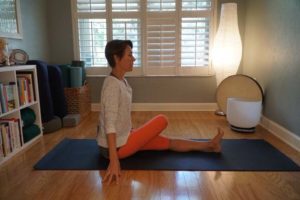
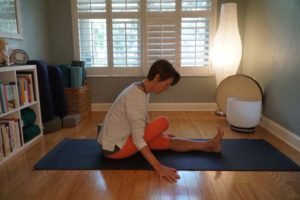
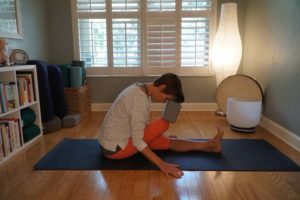
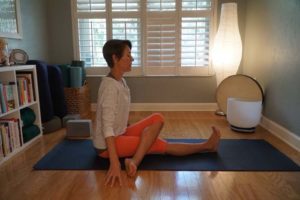
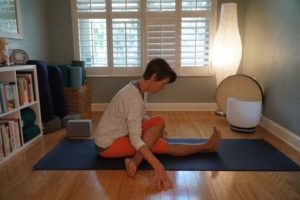
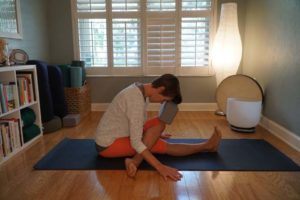
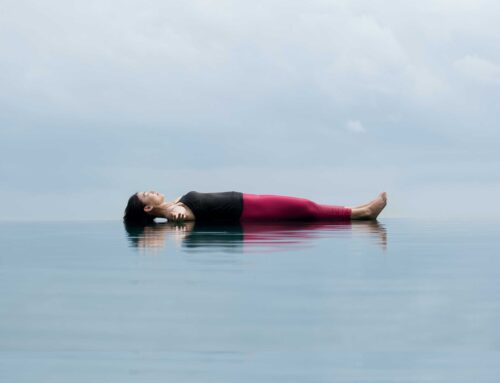

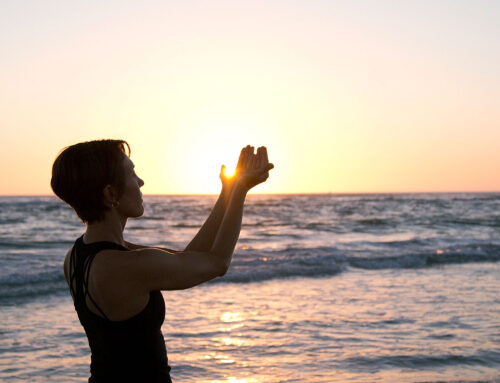
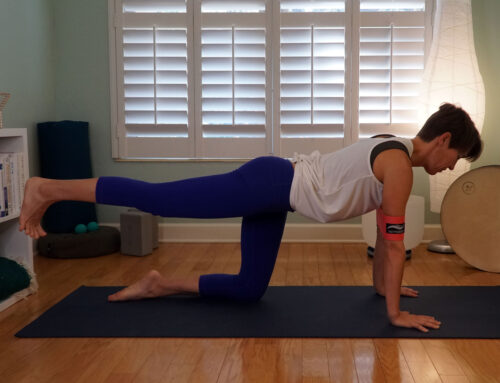
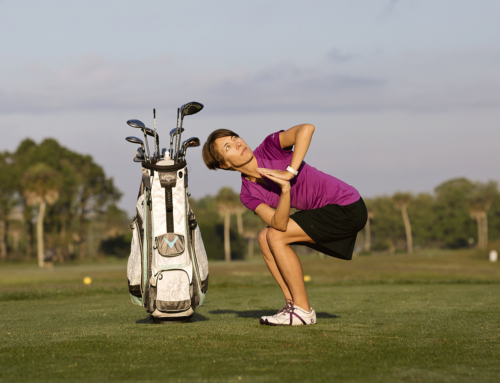
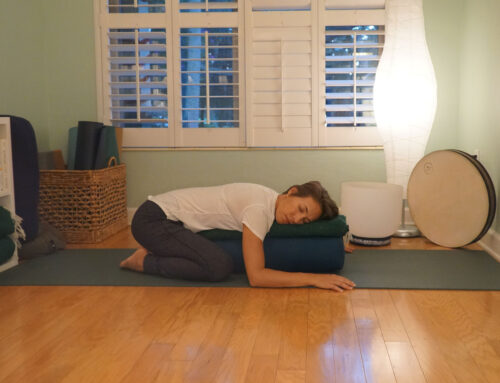

This has been very helpful thank you soo much, you explain very lucidly why you have put the poses together which I feel helps the teacher and more importantly the practicing yogi.
Thank you 🙏 ❤️🙏
Hi Edna, I’m so glad this information is helpful to you. I like sharing the WHY behind the HOW of sequencing, and I hope you will use it as a sounding board from which to create your own wonderful sequences moving forward.